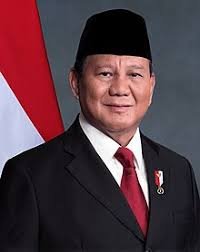
Indonesian President Prabowo Subianto
On January 26, 2025, India celebrated its 76th Republic Day with grand festivities in New Delhi. The event was marked by a parade showcasing the nation’s military strength and cultural diversity. Indonesian President Prabowo Subianto was the chief guest for this year’s celebrations. The parade featured a variety of performances, including colorful tableaux, fighter jet formations, and impressive motorbike stunts by army daredevils. Approximately 5,000 artists performed over 45 different dance forms, highlighting India’s rich cultural heritage. Military contingents marched alongside these performances, demonstrating the nation’s defense capabilities. A notable highlight was the participation of the Indonesian National Armed Forces, marking their first appearance in India’s Republic Day parade. This inclusion underscored the deepening defense and cultural ties between India and Indonesia. The theme for Republic Day 2025 was “Swarnim Bharat – Virasat aur Vikas” (Golden India – Heritage and Development), reflecting the nation’s journey of progress while honoring its rich cultural heritage. India’s tradition of inviting foreign dignitaries as chief guests for the Republic Day celebrations is a testament to the country’s emphasis on diplomacy and international relations. This custom, which began in 1950, highlights India’s commitment to fostering global partnerships and recognizing significant bilateral ties.
History and Chronology of Inviting Foreign Dignitaries on India’s Republic Day
Origins of the Tradition The practice was initiated during the first Republic Day on January 26, 1950, when Dr. Sukarno, the first President of Indonesia, was invited as the chief guest. This set the tone for India to use the occasion as a platform to showcase its foreign policy objectives and strengthen international goodwill. Significance of the Invite The choice of a chief guest reflects India’s geopolitical priorities and its evolving relationships. Countries with whom India seeks to deepen ties, whether in trade, defense, or cultural exchange, often find their leaders gracing the occasion. This gesture not only underscores mutual respect but also serves as a signal of India’s strategic interests. Notable Guests Over the Years- Cold War Diplomacy: During the Cold War, leaders from both the Eastern and Western blocs were invited, showcasing India’s non-aligned stance. In 1955, the USSR’s leaders, and in 1959, the UK’s Prime Minister Harold Macmillan, were among the notable guests.
- Regional Cooperation: Neighboring countries and SAARC members have often been highlighted. For instance, Bhutan’s King Jigme Dorji Wangchuck was invited in 1954, and Sri Lanka’s President J. R. Jayewardene in 1979.
- Economic Partners: Leaders from economically significant nations have frequently been invited, such as Japan’s Prime Minister Shinzo Abe in 2014 and U.S. President Barack Obama in 2015.
- Multilateral Engagements: In a unique move in 2018, leaders from all 10 ASEAN countries were invited, showcasing India’s “Act East” policy.
- 1950: President Sukarno (Indonesia)
- 1951: King Tribhuvan Bir Bikram Shah (Nepal)
- 1952: None
- 1953: None
- 1954: King Jigme Dorji Wangchuck (Bhutan)
- 1955: Governor-General Malik Ghulam Muhammad (Pakistan)
- 1961: Queen Elizabeth II (United Kingdom)
- 1965: Food and Agriculture Organization Director-General Binay Ranjan Sen
- 1974: President Josip Broz Tito (Yugoslavia)
- 1979: Prime Minister Malcolm Fraser (Australia)
- 1980: President Valéry Giscard d’Estaing (France)
- 1988: President Junius Richard Jayewardene (Sri Lanka)
- 1991: Premier Anand Panyarachun (Thailand)
- 1995: President Nelson Mandela (South Africa)
- 1998: President Jacques Chirac (France)
- 2000: President Olusegun Obasanjo (Nigeria)
- 2006: King Abdullah bin Abdulaziz Al Saud (Saudi Arabia)
- 2009: President Nursultan Nazarbayev (Kazakhstan)
- 2010: President Lee Myung-bak (South Korea)
- 2015: President Barack Obama (USA)
- 2018: ASEAN leaders (10 countries)
- 2020: President Jair Bolsonaro (Brazil)
- 2021: None (COVID-19 pandemic)
- 2023: President Abdel Fattah El-Sisi (Egypt)
- 2025: President Prabowo Subianto (Indonesia)
